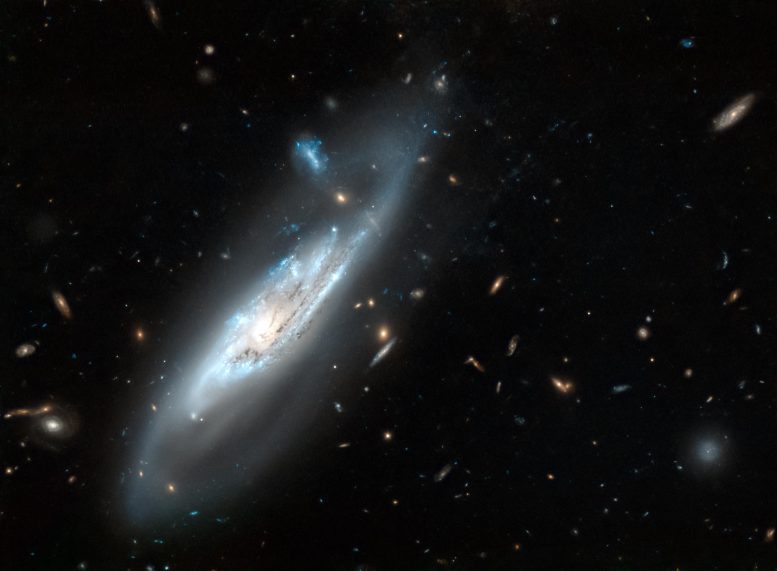
Hubble Space Telescope image of the stunning silvery-blue spiral arms of the galaxy NGC 4848. Credit: ESA/Hubble & NASA, M. Gregg
A notable feature of most spiral galaxies is the multitude of arching spiral arms that seemingly spin out from the galaxy’s center. In this image, taken with the NASA/ESA Hubble Space Telescope, the stunning silvery-blue spiral arms of the galaxy NGC 4848 are observed in immense detail. Not only do we see the inner section of the spiral arms containing hundreds of thousands of young, bright, blue stars, but Hubble has also captured the extremely faint wispy tails of the outer spiral arms.
This wispy barred spiral galaxy was first discovered in 1865 by the German astronomer Heinrich Louis d’Arrest. In his career, Heinrich also notably discovered the asteroid 76 Freia and many other galaxies and he also contributed to the discovery of Neptune.
If you are situated in the Northern Hemisphere with a large telescope, you might just be able to observe the ghost-like appearance of this faint galaxy within faint constellation of Coma Berenices (Berenice’s Hair).
Notes
Spiral galaxies form a class of galaxy originally described by Edwin Hubble in his 1936 work The Realm of the Nebulae and, as such, form part of the Hubble sequence. Most spiral galaxies consist of a flat, rotating disk containing stars, gas and dust, and a central concentration of stars known as the bulge. These are often surrounded by a much fainter halo of stars, many of which reside in globular clusters.
A barred spiral galaxy is a spiral galaxy with a central bar-shaped structure composed of stars. Bars are found in about half of all spiral galaxies. Bars generally affect both the motions of stars and interstellar gas within spiral galaxies and can affect spiral arms as well. The Milky Way Galaxy, where our own Solar System is located, is classified as a barred spiral galaxy.
Heinrich Louis d’Arrest (August 13, 1822 – June 14, 1875) was a German astronomer, born in Berlin. His name is sometimes given as Heinrich Ludwig d’Arrest.



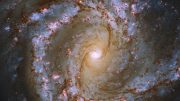
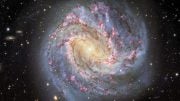
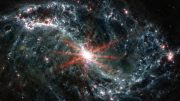
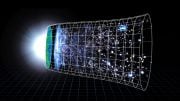
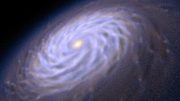
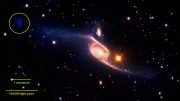
This galaxy is very pretty, but the outer wispyness of the arms shouldn’t be so strange in a barred spiral. One view of String Theory suggests that galaxy centers are branes (dimensional membranes), not Black Holes, and that galaxy formation may be a repeating process starting as a barred spiral, then spiral, then elliptical, then back to barred spiral. Specifics and details may be seen in my YouTube https://www.youtube.com/watch?v=uP_DFV-PAMQ
Howard Bender: Your posted video is private
Sorry – I’m trying to get that fixed. YouTube hasn’t helped.
OK, I think I got it fixed. Try https://www.youtube.com/watch?v=qqwb5kpa6Vk&t=2s
It is posted private!
Sorry – I’m trying to get that fixed. YouTube hasn’t helped.
OK, I think I got it fixed. Try https://www.youtube.com/watch?v=qqwb5kpa6Vk&t=2s
Well if they are Branes then why has science not been able to confirm the beautiful theory of string theory…. I so want to believe also. We cant get passed proving general relativity wrong yet, let alone prove string theory
String Theory doesn’t imply that General Relativity is wrong. Einstein used zero-dimensional points to fashion his theory while String Theory uses one-dimensional strings to do basically the same thing, while also combining the quantized waves in Quantum Mechanics.
maybe a blackhole is just a means to create more life energy like a cog in space pollinating the gases and stars? maybe it’s trying to meld with space itself
This Galaxy is Located to Dense cluster of Coma which it tend thats its Gas Poor Ghostly Arms are Results of Interaction tk Intracluster medium,Which heated up the Star Forming gas and Prevent Star formation on its Outskirt..
Similar to Messier9..
Signs of Ram Pressure Stripping Effect is earlier.
This Galaxy is Suffering to lost gas on its Outskirts thats why It is Look like Ghostly…
you can compare this to Messier90
But then why does so much of it look like an elliptical galaxy?